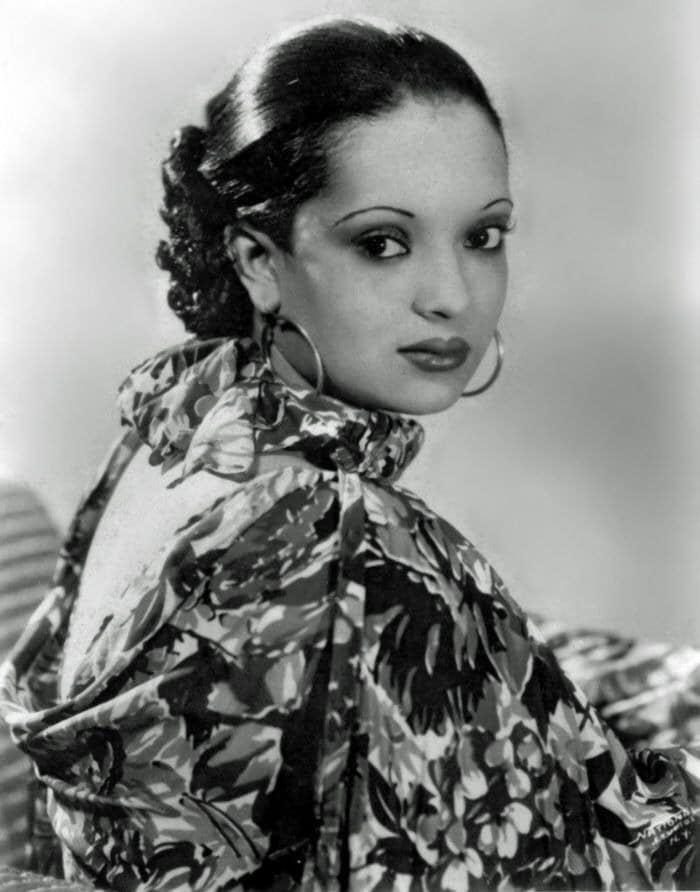Among the Black pioneers who changed history, Nina Mae McKinney stands out.
Nina Mae McKinney was an American actress who gained fame in the 1930s and postwar period in theatre, film, and television. She began her career on Broadway and in Hollywood, rising to stardom with the 1929 film “Hallelujah!”.
Known as “The Black Garbo” in Europe for her stunning beauty, McKinney was one of the first African-American film stars in the United States and one of the first African-Americans to appear on British television. Let’s explore the journey to stardom of this wonderfully gifted actress.
McKinney’s early life filled with hardship
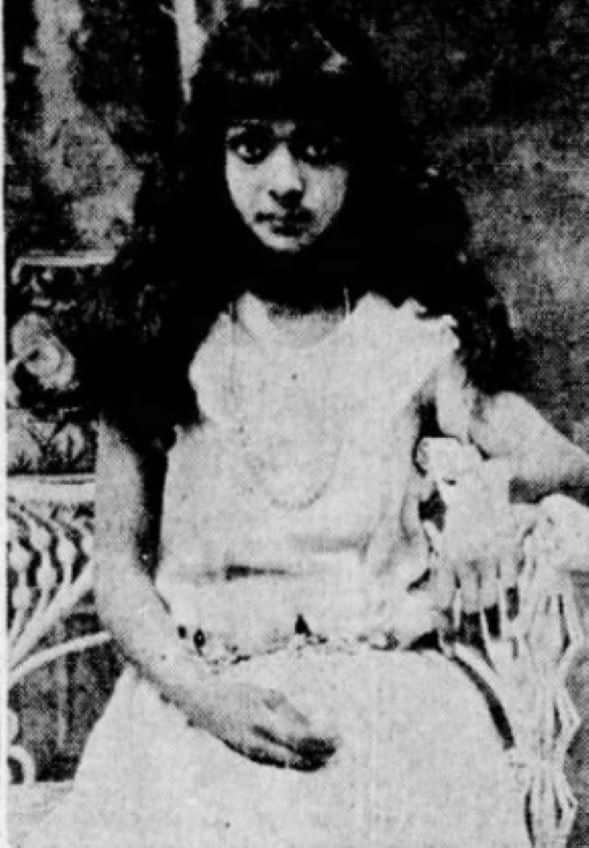
Nina Mae McKinney, born on June 12, 1912, in Lancaster, South Carolina, had a challenging early life. Her mother, Georgia Crawford, often sought refuge from her abusive husband at the home of Colonel Leroy Springs, where she worked as a maid.
By 1920, Georgia moved to Savannah, Georgia, to work as a cook, leaving young Nina with her grandmother in Lancaster. Her father, Hal, supported them as a delivery man.
Georgia later married James Edwin Maynor and moved to New York, bringing Nina with her. However, when Hal went to prison, Nina was sent back to South Carolina to live with her uncle. Hal escaped from prison in 1923 and was never caught.
In 1923, Nina began living with the Springs family as a domestic worker, where she entertained herself with bicycle stunts while running errands. She also participated in school plays at Lancaster Training School.
Around 1925, at age 13, Nina moved to Manhattan to live with her mother and stepfather. She attended public school but eventually dropped out by the summer of 1927. Adopting the stage name Nina Mae, she began dancing in New York City nightclubs, marking the start of her career in entertainment.
Her breakthrough with Hallelujah!
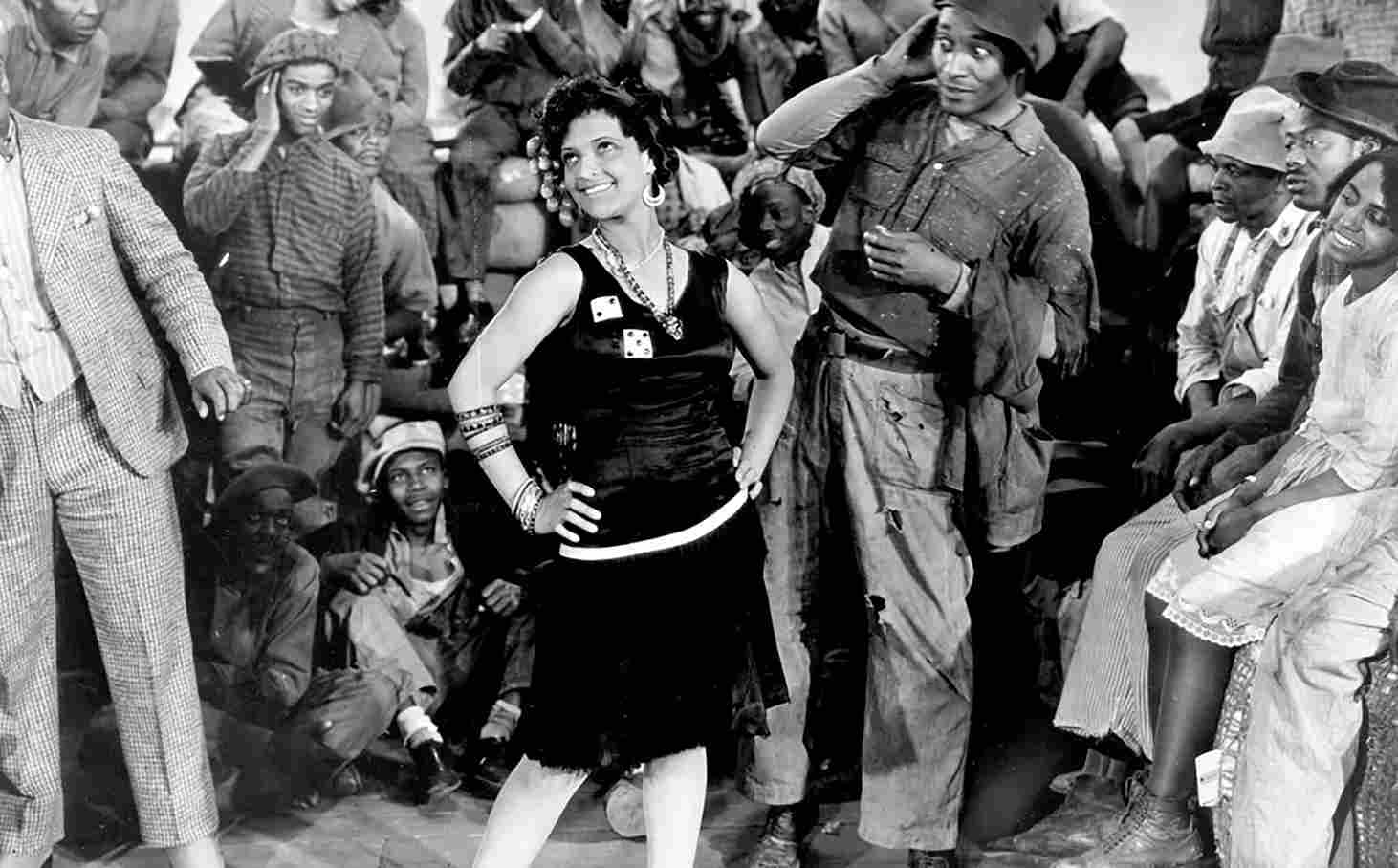
In January 1928, the Blackbirds revue, later renamed “Blackbirds of 1928,” moved to the Liberty Theatre and ran for 518 performances. McKinney joined as a chorus girl, quickly gaining attention for her beauty and talent.
In October 1928, King Vidor sought actors for “Hallelujah!” and noticed McKinney during casting sessions in Harlem. Impressed by her personality, he cast her in the film, though she initially had a minor role.
He later praised her, saying, “Nina Mae McKinney was third from the right in the chorus. She was beautiful and talented and glowing with personality.”
In 1929, Vidor cast her as Chick in “Hallelujah!,” recognizing her natural acting talent. McKinney’s vibrant performance made Chick a memorable character, influencing future African-American actresses like Dorothy Dandridge.
The “Hallelujah!” became a classic as the first sound film to depict African-American life and family dynamics.
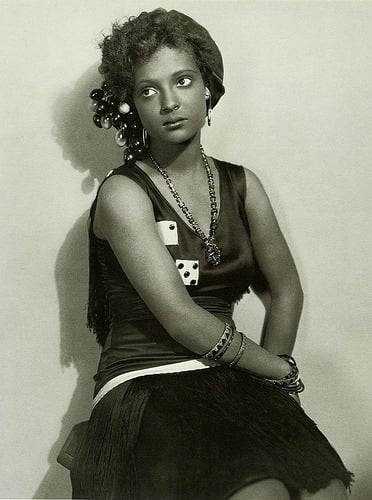
By May 20, 1929, McKinney signed a five-year contract with MGM, becoming the first African-American performer to do so. She returned to New York to help the Springs family but soon appeared at the Embassy Theatre for the premiere of “Hallelujah!,” which was a huge success.
As the first African-American actress in a lead role in a mainstream film, McKinney received praise for her performance. Vidor, nominated for a directing Oscar, noted she was a joy to work with.
By then, the film had already excited both Black and white press. Although it wasn’t the first Black movie, as filmmakers like Oscar Micheaux were already making films for Black audiences, nor the first Black musical from a major studio, as Fox’s “Hearts in Dixie” came first, it stood out.
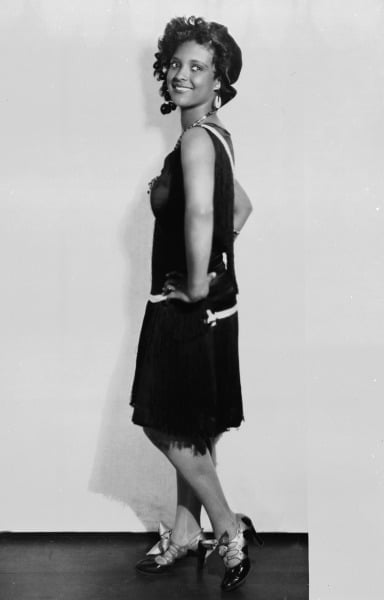
Critics praised it for its music, religious themes, and portrayal of a loving African American family. W.E.B. DuBois wrote in The Crisis, the N.A.A.C.P.’s publication, that the film’s “sense of real life” made it “epoch-making.”
DuBois mentioned McKinney’s “slim grace,” but five months later, a glamorous photo of her appeared on The Crisis cover. There was no story, and she was simply identified as a “motion picture actress.”
By then, her fame had skyrocketed. Headlines like “Nina Mae McKinney, Famous Talkie Star to Appear Here in Person” in the Pittsburgh Courier proclaimed her as perhaps the most outstanding screen star of her race. A great deal of expectation rested on her young shoulders.
Challenges she faced in Hollywood

MGM may have put McKinney under contract, but the details are unclear. After “Hallelujah!,” Hollywood didn’t know what to do with her. Despite being a ready-made star, she faced the harsh reality of being a Black woman in Jim Crow Hollywood, where racism was rampant.
McKinney’s success in “Hallelujah!” did not lead to leading roles in the American film industry. She was often cast in minor roles or low-budget, all-Black movies, a common fate for many talented African-American actors and actresses of that era.
Despite her obvious talent, McKinney remained virtually unknown among American theatergoers in the 1930s. Donald Bogle, in his study of African-American film history, noted that Black actors were often limited to stereotypical roles like “Toms, Coons, Mulattoes, Mammies, and Bucks.”
Barred from many opportunities in Hollywood, McKinney eventually left the United States and showcased her talents in Europe.
Triumph and recognition in Europe

Due to limited job opportunities and racism in the U.S., many African-American artists became expatriates. Nina Mae McKinney performed across Europe in cities like London, Budapest, Dublin, and Paris.
In January 1934, McKinney toured the Côte d’Azur with jazz pianist Garland Wilson, starting in Nice, France. They enjoyed success there and in Prague. McKinney then performed in Budapest and later opened in Athens, Greece, billed as the Black Garbo.
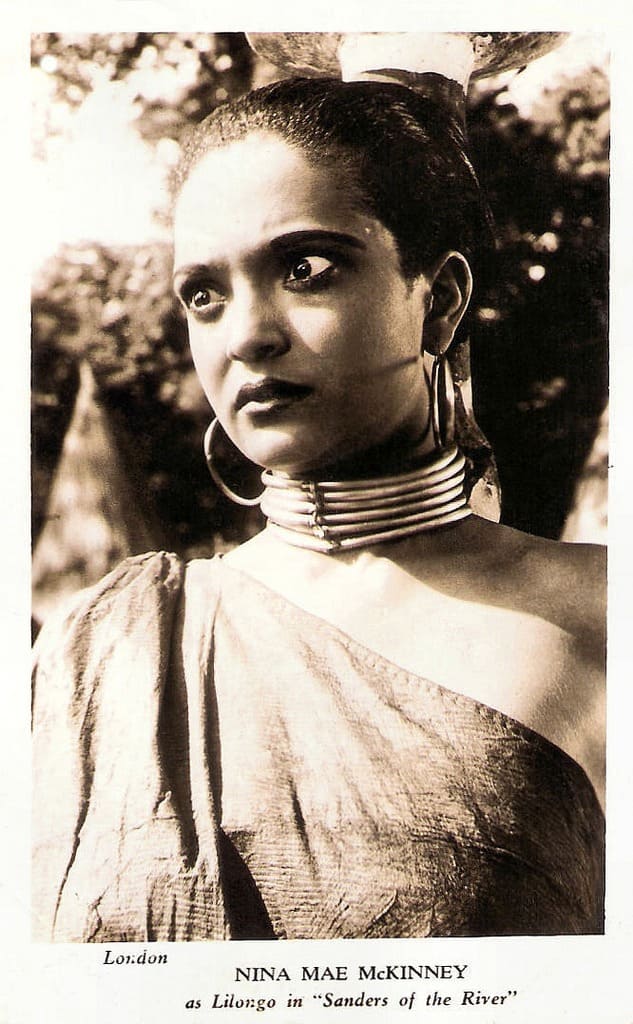
On July 15, 1934, McKinney performed at London’s Alhambra Theatre for two weeks. She also appeared in her first British film, “Kentucky Minstrels”.
That summer, McKinney filmed Bosambo (later Sanders of the River) with Paul Robeson at Denham Film Studios.
Her lasting legacy
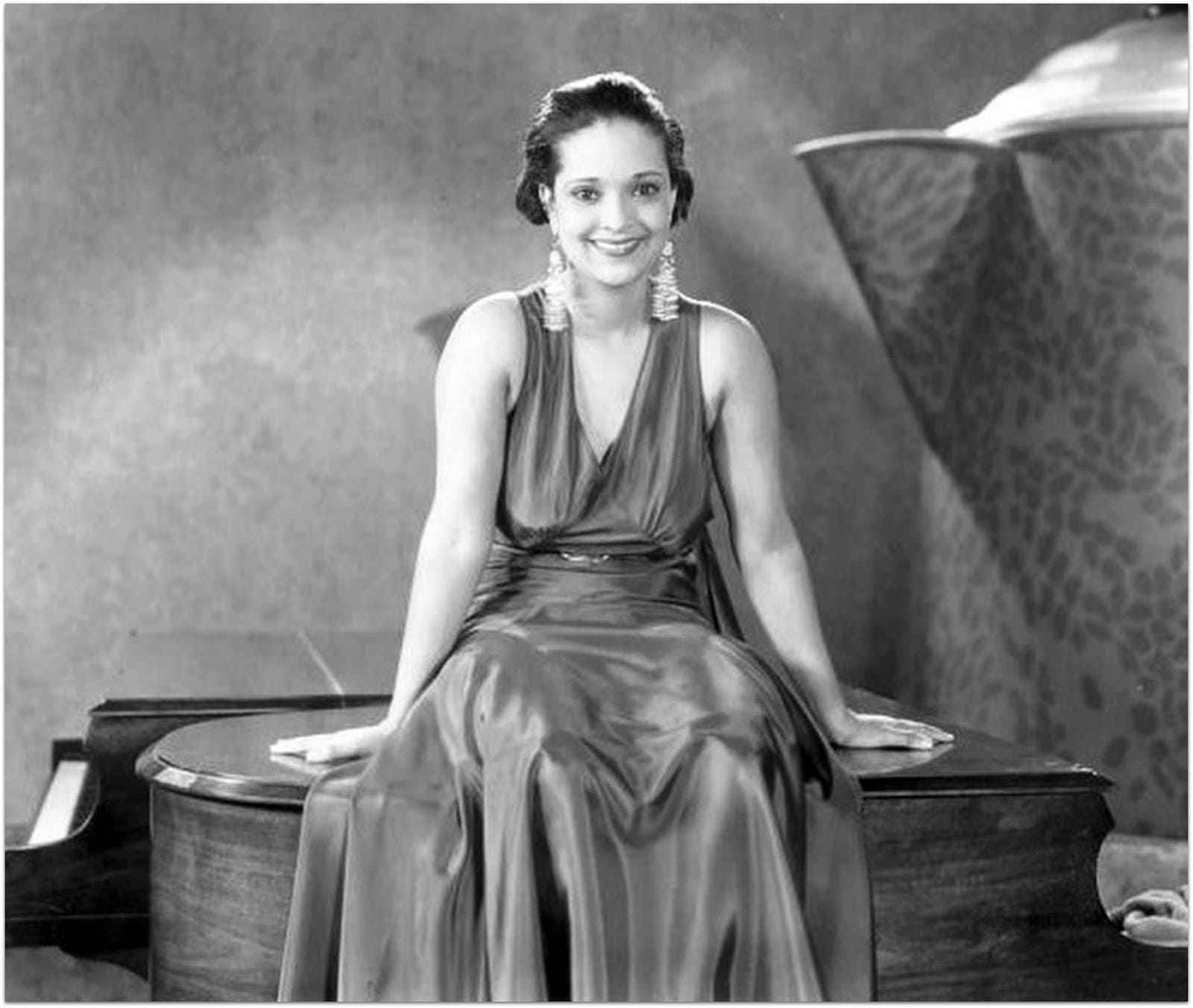
After her time in Europe, Nina Mae McKinney returned to the United States and performed in all-Black productions.
She appeared in the 1939 movie The Devil’s Daughter, set in Jamaica, and in 1944, she had roles in Dark Waters with Merle Oberon and Together Again with Irene Dunne.
After 1960, McKinney lived in New York City. She died of a heart attack on May 3, 1967, at age 54, at the Metropolitan Hospital in Manhattan. Her funeral was held at the Little Church Around the Corner.
In 1978, McKinney received a posthumous award from the Black Filmmakers Hall of Fame for her lifetime achievement. In 1992, the Walter Reade Theater at Lincoln Center showcased her singing in Pie, Pie Blackbird (1932) as part of a jazz divas film series.
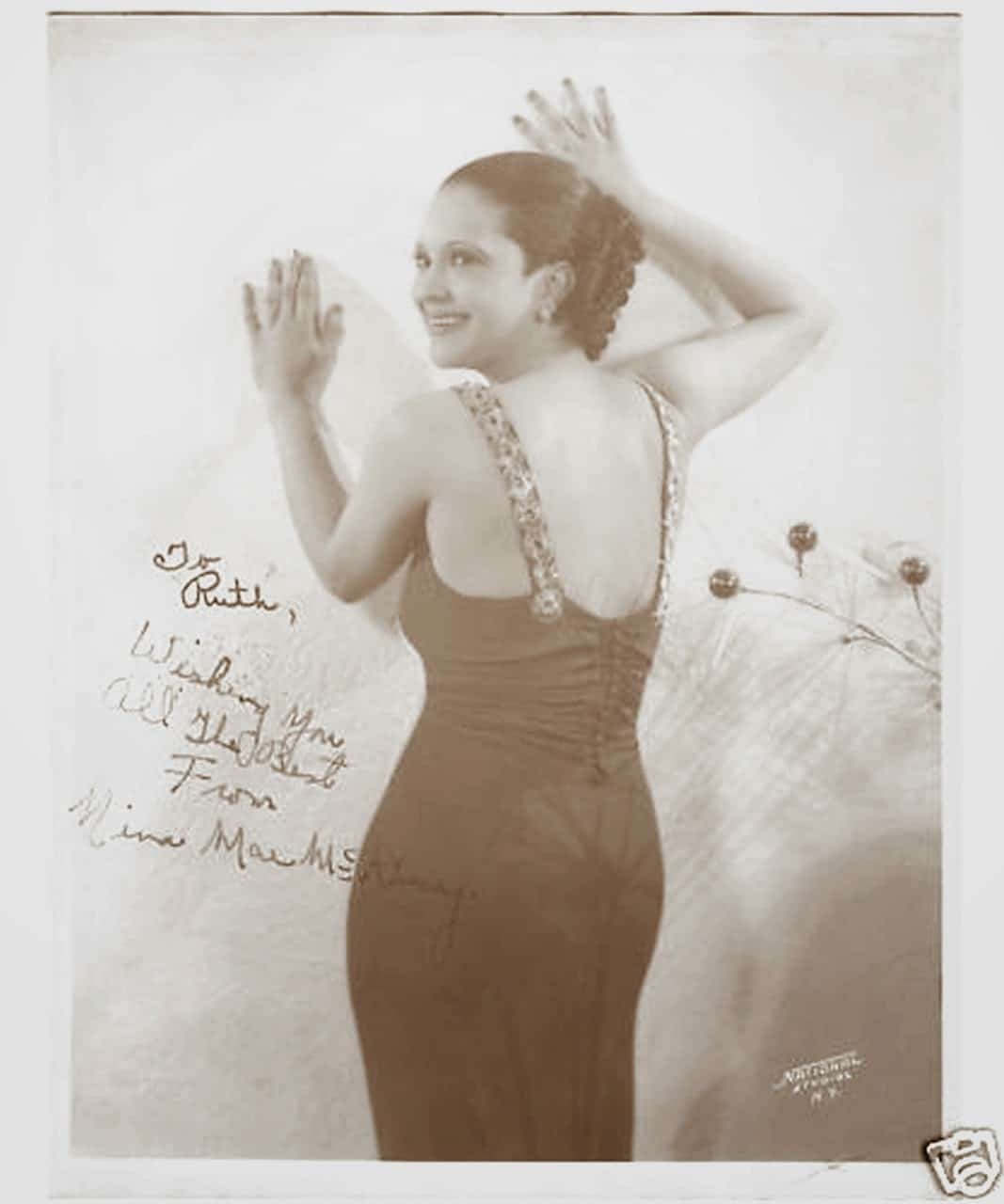
Film historian Donald Bogle highlighted McKinney in his book Toms, Coons, Mulattoes, Mammies, And Bucks—An Interpretive History Of Blacks In American Films (1992), recognizing her influence on other actresses.
He wrote, “her final contribution to the movies now lay in those she influenced.”
In 2019, The New York Times featured McKinney in its “Overlooked” series, correcting past biases by publishing obituaries for historical minorities and women.


